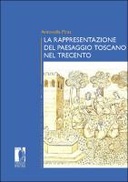Explore

La rappresentazione del paesaggio toscano nel Trecento
Antonella Piras
2012
0 Ungluers have
Faved this Work
Login to Fave
The book aims to identify the prevalent characteristics of the Tuscan landscape in the fourteenth century through the artistic and literary expressions of two of the main protagonists of the century, Giotto and Boccaccio. Emerging from a critical reading of the Decameron by Boccaccio and the paintings by Giotto is the relationship between fourteenth-century man and nature: having overcome the fear of existence, man is aware of the territory/landscape and his capacity of control over nature. This emerges in the relationship between the city and the landscape outside the walls, in the two artists' careful observation of nature, in the sense of belonging to places, in the role of open spaces, in the conditions of well-being of the environment, in the sense of protection and security; and it is also highlighted in the characteristics of the landscape, such as the sense of proximity, distance, time and aesthetics, in relation above all to gardens and the countryside. From the studies performed there emerges a curiosity that was not yet capable of expressing itself in autonomous forms, but was already appreciable in the innovative techniques heralding the next century.
This book is included in DOAB.
Why read this book? Have your say.
You must be logged in to comment.
Rights Information
Are you the author or publisher of this work? If so, you can claim it as yours by registering as an Unglue.it rights holder.Downloads
This work has been downloaded 15 times via unglue.it ebook links.
- 15 - pdf (CC BY-NC-ND) at OAPEN Library.
Keywords
- Architecture
- Landscape art & architecture
- The arts
- thema EDItEUR::A The Arts::AM Architecture::AMV Landscape architecture and design
Links
DOI: 10.36253/978-88-6655-284-0Editions

